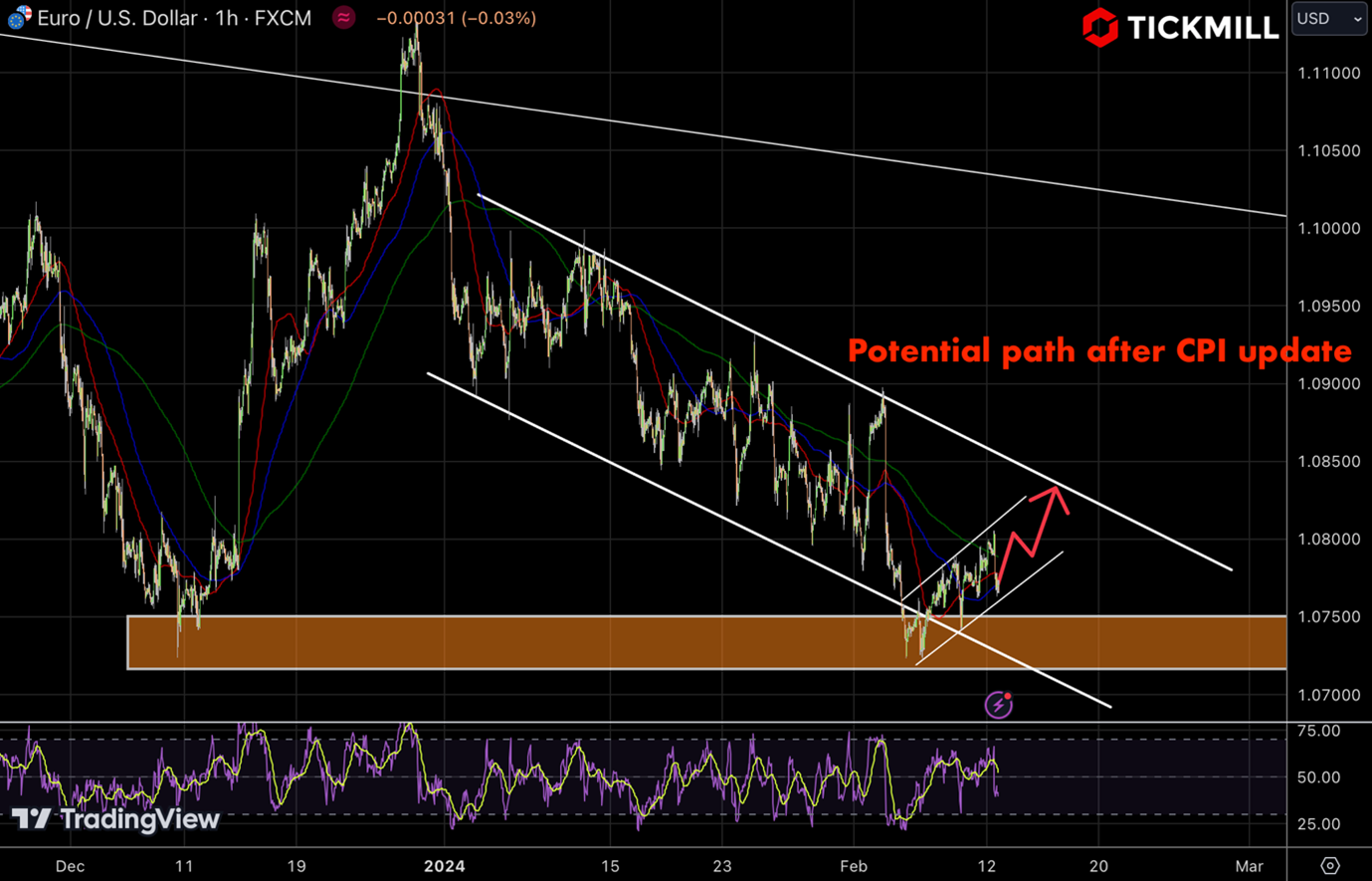EURUSD price action lays the groundwork for its rally, the progress hinges on US CPI update
.jpg)
EUR/USD displayed resilience last week, closing positively for the fourth consecutive day, though ultimately ending the week virtually unchanged. Despite an initial surge to the 1.0800 mark, marking a one-week high, the pair succumbed to downward pressure during the European session, largely influenced by deficit of medium-term buyers. Uncertainty around forthcoming US CPI release, with risks skewed towards an upside surprise, holds back buying activity. The Federal Reserve is positioned to maintain higher interest rates for an extended period, providing underlying support to the Greenback. If US inflation rate proves to be persistent the central bank may be forced to delay rate cuts even further thus making US fixed income and hence US currency even more attractive assets.

Adding to the market complexity, ECB Governing Council member Fabio Panetta hinted at the potential for an interest rate cut in the near future, thus underscoring potential policy divergence between the Fed and the ECB. While such remarks typically have the potential to impact EUR/USD, the response was relatively muted, probably because of lack of consensus in the ECB camp about direction of the policy. Notably, ECB officials have been actively managing expectations for early policy easing. However, recent German inflation data further underscored easing price pressures, with a decline to a 2.9% YoY rate in January from 3.7% previously.
Technically, EUR/USD faces resistance around the 1.0800 level, with the 1.0830 confluence hurdle serving as a critical pivot point. A breach beyond this level could tilt the near-term bias in favor of bullish traders, potentially propelling the pair towards the 1.0900 psychological barrier.
In the Asian session, USD/JPY encountered downward pressure, trading near the 149.00 mark. Bullish expectations for the Yen almost exclusively hinge on the progress of negotiations with Japanese firms about wage hikes which, if successful, could boost BoJ confidence in withdrawal of policy stimulus and hence drive Japanese fixed income yields higher, drawing more capital in local bonds. The BoJ's aim for sustainable inflation above 2% underscores the significance of steady wage growth in the context of policy normalization.

BoJ Deputy Governor Uchida Shinichi's acknowledgment of the deep negative trajectory of monetary policy conditions in Japan reflects a cautious approach to policy adjustments. Despite this, the International Monetary Fund's improved outlook on Japan's recovery has bolstered optimism surrounding the Japanese Yen against the US Dollar. The IMF's recommendation for the BoJ to consider phasing out its yield curve control and asset purchase program, followed by a gradual transition towards interest rate hikes, has further shaped market sentiment.
Furthermore, comments from various Federal Reserve officials, including Dallas Fed President Lorie Logan and Atlanta Fed President Raphael Bostic, have added layers to the market narrative. Logan's cautious stance, emphasizing the need for more data to confirm progress on inflation, contrasts with Bostic's concerns about prolonged high inflation. These divergent views contribute to the nuanced understanding of the Fed's potential policy trajectory.
Disclaimer: The material provided is for information purposes only and should not be considered as investment advice. The views, information, or opinions expressed in the text belong solely to the author, and not to the author’s employer, organization, committee or other group or individual or company.
Past performance is not indicative of future results.
High Risk Warning: CFDs are complex instruments and come with a high risk of losing money rapidly due to leverage. 71% and 70% of retail investor accounts lose money when trading CFDs with Tickmill UK Ltd and Tickmill Europe Ltd respectively. You should consider whether you understand how CFDs work and whether you can afford to take the high risk of losing your money.